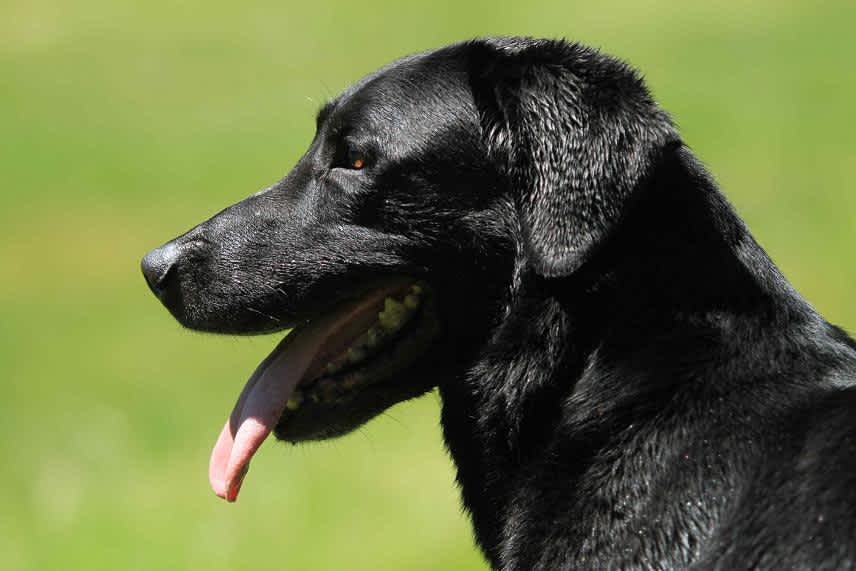Hunting Dog Training: From the Dog’s Perspective
Quick Dog Productions LLC 09.23.11

By Larry Saavedra
If you’ve watched a professional trainer in the field, then you’ve probably witnessed a calmer and more calculated process to teach dogs right from wrong.
I’ve worked with several pro trainers and they aren’t much different from the rest of us, except they do it for a living, and they can’t afford to make too many mistakes. Seldom do the pros make rash decisions though. Professional dog trainers plan for the best and train for the worst possible outcome.
The pros know what to expect and just how much to challenge the dog in the field. After all, retrievers can have good and bad days just like us.
Training retrievers is lots of fun and it can build your confidence and strengthen the bond between you and your dog. But to develop a top-tier retriever that can take big water like an Olympiad, and then push through thick cover like an NFL linebacker, you’ll have to do more than simply practicing marks and planting blinds.
The best trainers go into it with a bigger picture attitude of the environment they are working in, and they know exactly what they are trying to teach the dog before they even get out of their truck.
The truth is we can’t afford to make constant mistakes when training dogs. Dogs are creatures of habit. That was pounded in my head on many occasions when I started out with my chocolate Lab, and I’ve never forgotten it. Any miscue, or departure from the fundamentals of proper training that confuses or frustrates the dog in any aspect of fieldwork, leads to a lifetime of behavior that can destroy everything that you’ve worked so hard to develop.
You won’t get everything right the first time, so don’t be disappointed, but you must always be willing to educate yourself and understand that training really never ends.
My Experience
As an AKC judge and master level Hunt Test competitor, I’ve seen the results of poor decision making on many occasions. I’ve seen more than a few competitors, that for whatever reason, did exactly the opposite of what is expected of them the day of the event. It can be nerves or the lack of experience. Often times, it comes down to not seeing the bigger picture like the pros do. Think of a contractor who tries to build a house without using blueprints… and I think you’ll get where I’m going with this.
Think Like a Retriever
I can’t go into all the details here, but I invite you to visit www.quickdogproductions.com to see video of what I’m about to explain. I produced the DVD Retrievers in the Field: From a Dog’s Perspective because I wanted to share something I thought was valuable for anyone interested in the behavior of retrievers.
A fellow trainer with several AKC Master National dogs once told me about seeing things from a “dog’s perspective”. Her exact advice was to “crouch on the ground at the same level of the dog”, and then look out and explain what I saw. It was groundbreaking for me to see how much the environment had changed. Suddenly, the short reeds in the pond looked like skyscrapers, and the cover and brush in the field looked impossible to pass through. That’s what the dog sees. It was that simple to understand once I opened my mind to the concept.
By studying the terrain’s natural slopes, ditches, trees and other obstacles before releasing the dog you’ll have a better idea of which direction the dog will naturally travel, and why they can take a beeline around something that seems totally invisible to you even a short distance away. It’s not a new concept, but it works.
Long before I qualified my dog as an AKC master hunter, whatever I was doing was not helping the dog overcome her natural tendencies to get “sucked” into the trees. I studied Evan Graham’s Smartwork field books and refined my basic handling techniques. It worked, but reaching the pinnacle of AKC Hunt Test competition took even more education and training.
To this day, I start my fieldwork from about two feet off the ground. Try it sometime. Crouch down in the field so that you are at a dog’s eye level and look at how much differently the terrain looks when you change perspectives. If the line of travel from point A to point B is not well defined, and the dog can’t even see the bird or bumper fall you will immediately know that you are setting the dog up for failure.
See the terrain from the dog’s perspective and it won’t take long before your training buddy comes up to you and asks you what you are doing. Just tell him that you are training smarter, not harder!

